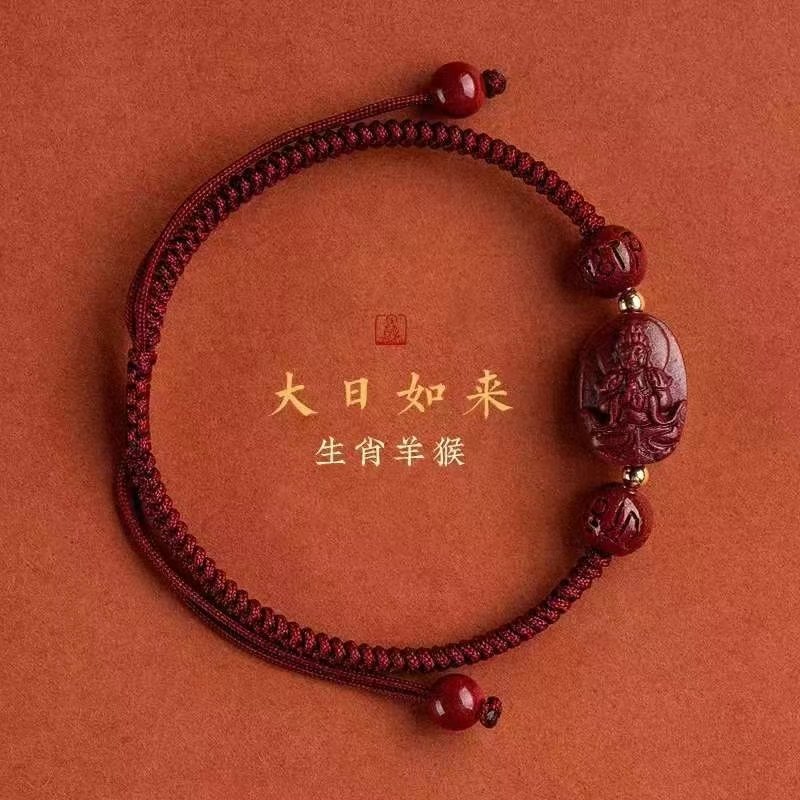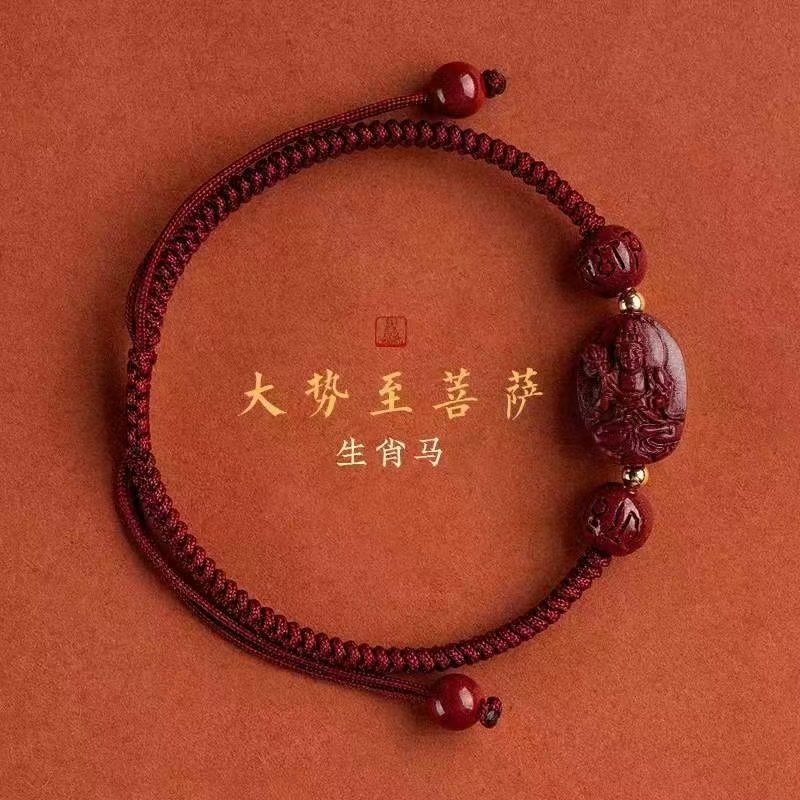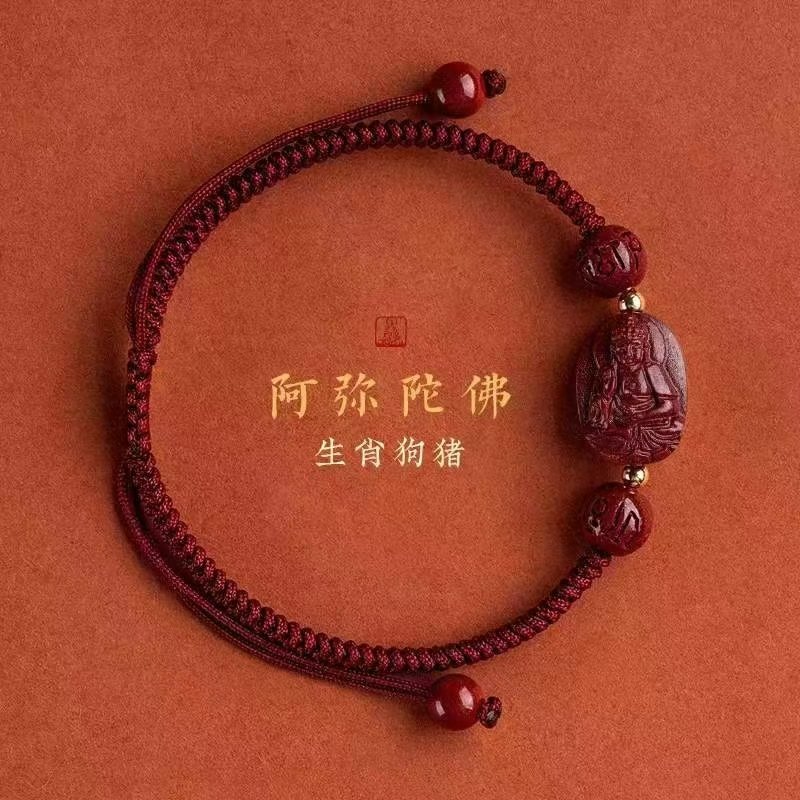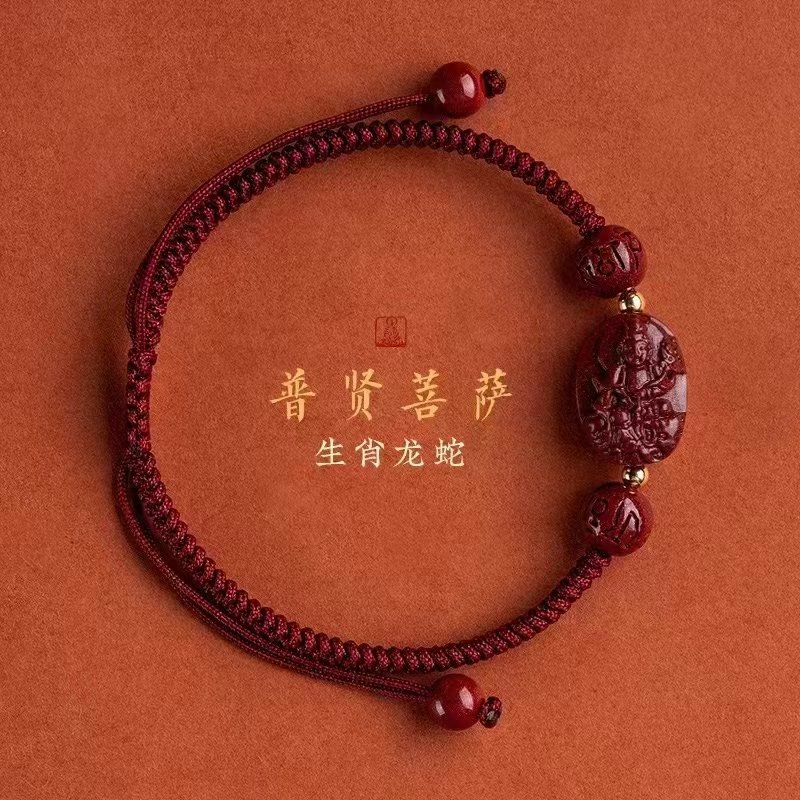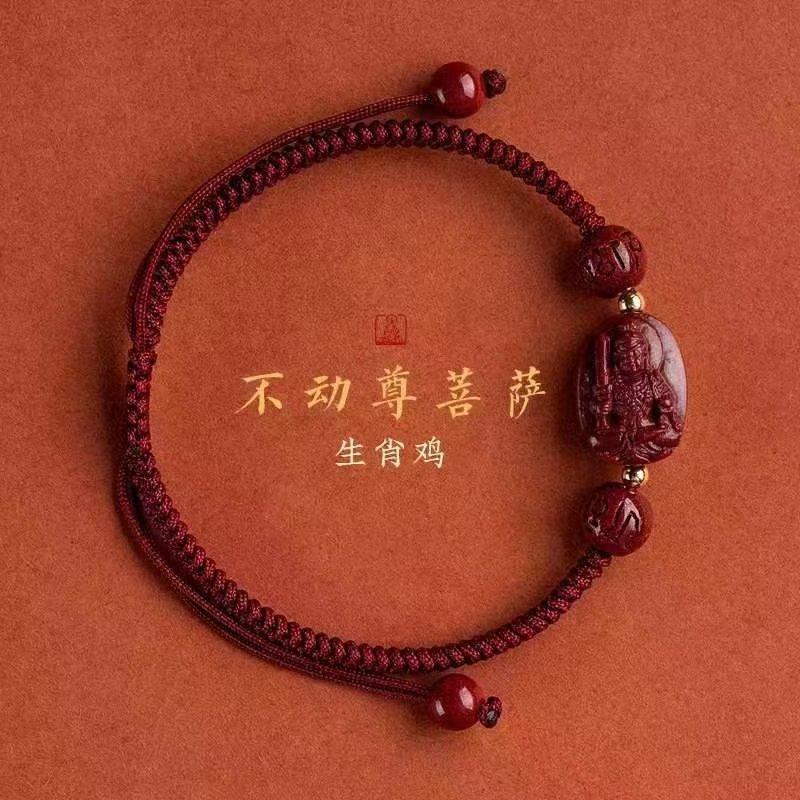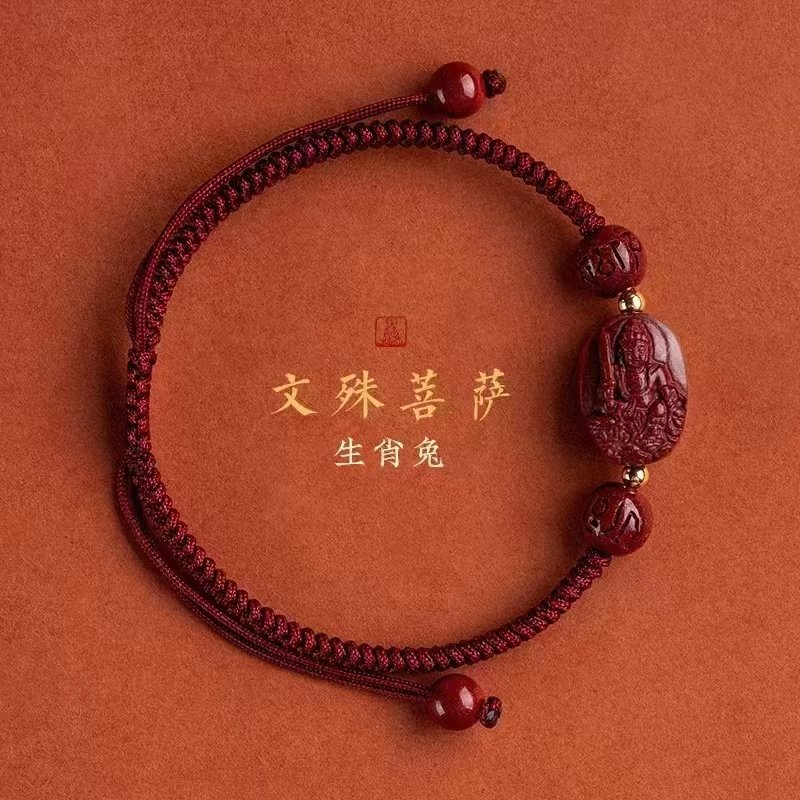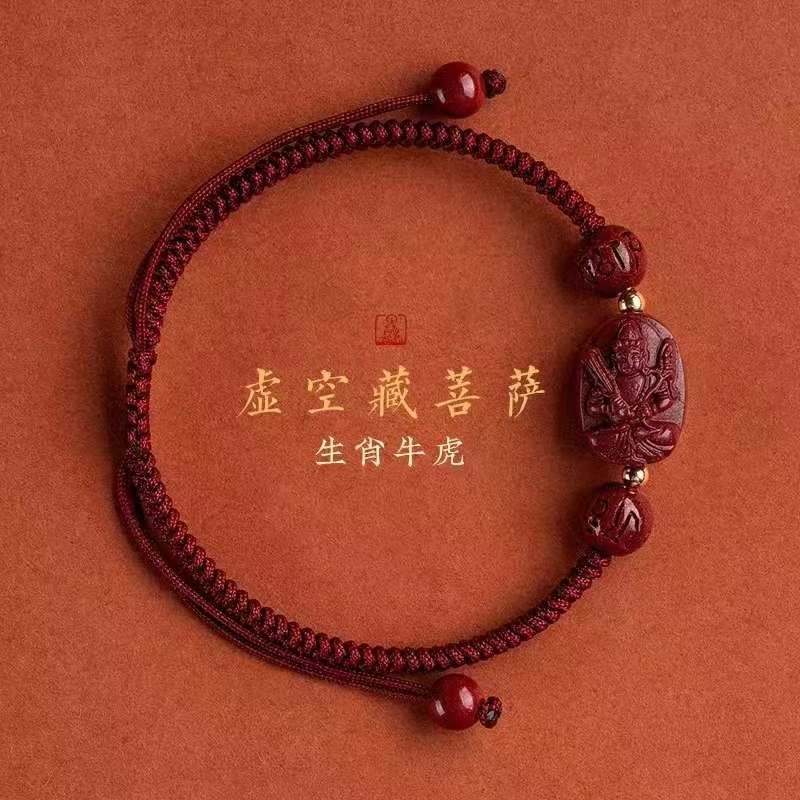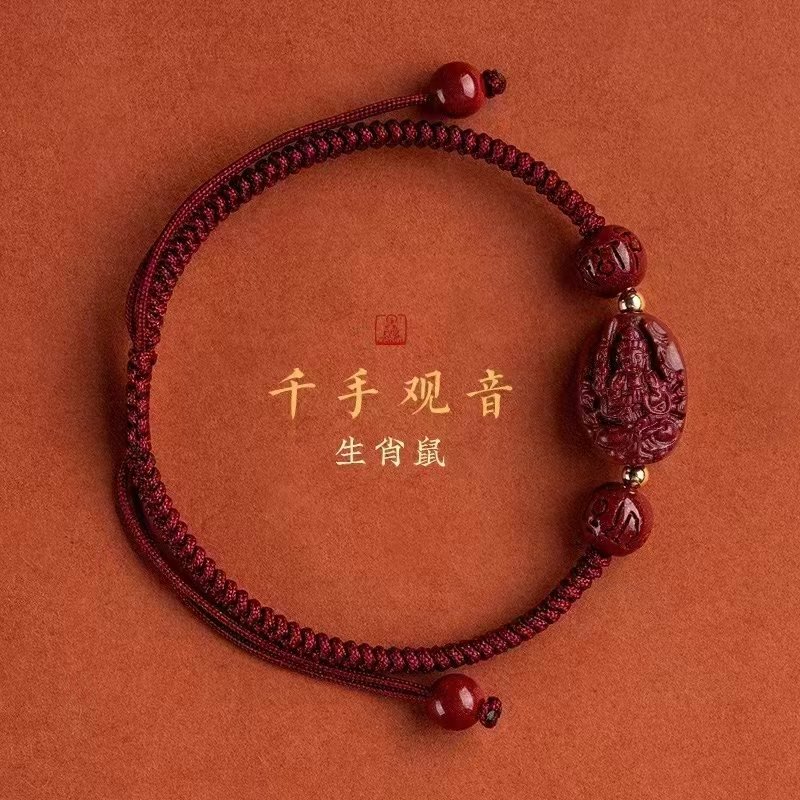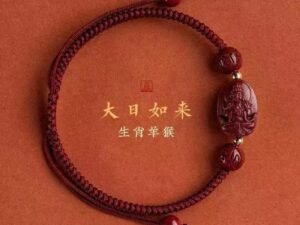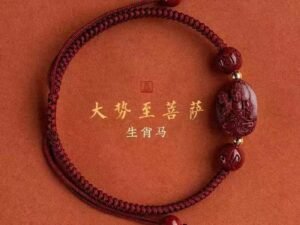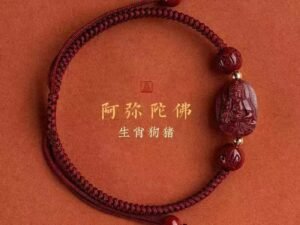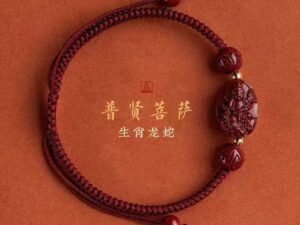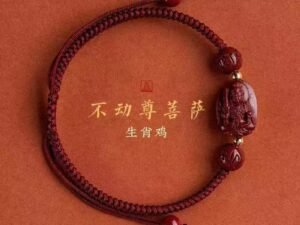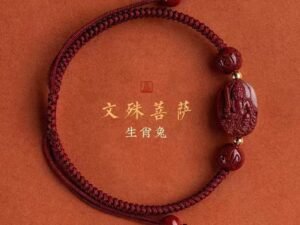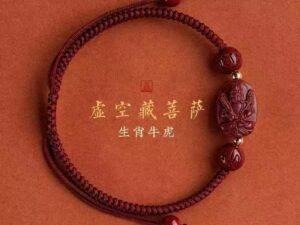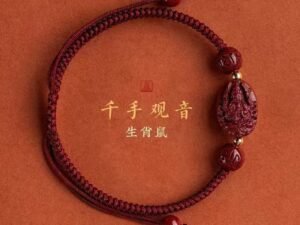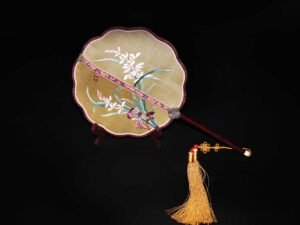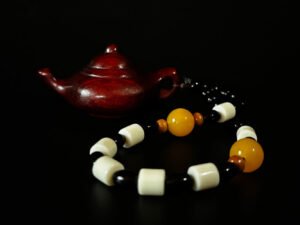Forged with cinnabar from ancient mines in the Zhongnan Mountains, this bracelet channels the energy of the 12 zodiac signs through eight sacred Bodhisattvas. Each bead features Dunhuang’s earthy red base adorned with gold filigree zodiac emblems:
Pig/Dog: Amitabha Buddha cradling a lotus, radiating boundless light
Dragon/Snake: Samantabhadra’s six-tusked white elephant coiled with celestial serpents, swirling with Sanskrit scriptures from the Lotus Sutra
Horse: Mahāsthāmaprāpta’s jeweled vase dripping dew, etched with the mantra “Dispeller of Darkness”
Rat: Perched on Thousand-Armed Guanyin’s bamboo leaves
Ox/Tiger: Flanking Ākāśagarbha’s wisdom sword
Rabbit: Clutching Mañjuśrī’s lion pendant
Ram/Monkey: Balancing Vairocana’s Dharma wheel
Rooster: Nestled in Acala’s sacred flames
The vermilion glow evokes protective temple bells at Lingyin Monastery and the sacred red bodhi seeds described in Luoyang’s Buddhist Chronicles. Worn daily, it channels the mantra: “One bead, one deity; one turn, one karma.”
Origins and Symbolism of the Chinese Zodiac
The Chinese zodiac, known as Shí-Èr Shēngxiào (十二生肖), is a symbolic system blending 12 earthly branches with animal totems. Rooted in ancient astral worship and agrarian philosophy, it reflects China’s timeless contemplation of natural cycles and cosmic order. Below, we unravel its origins and layered meanings:
Historical Origins
Astral Worship Theory
The Rites of Zhou (周礼) notes the tracking of Jupiter’s 12-year orbit, aligning with the 12 Earthly Branches.
Bamboo slips from the Qin dynasty (c. 217 BCE) found at Shuihudi, Hubei, document the earliest zodiac references in Rishu (《日书》), proving its Warring States Period origins.
Buddhist Influences
Tang dynasty integration of Indian Buddhist lore (e.g., Dunhuang’s “Twelve Guardian Deities” murals) enriched zodiac narratives.
Totemic Synthesis
Tribal totems (dragons for Han Chinese, horses for nomads) merged into a unified system, as seen in Classic of Mountains and Seas (《山海经》) myths like the “Dog Kingdom” and “Pig-Mouthed People.”
Temporal Symbolism
Han dynasty scholars linked animals to two-hour time blocks:
Rat (11 PM–1 AM): Night activity | Ox (1–3 AM): Rumination before dawn
Tiger (3–5 AM): Roaming forests | Rabbit (5–7 AM): Moon herb-gathering
Dragon (7–9 AM): Rain-making | Snake (9–11 AM): Grassland stealth
Horse (11 AM–1 PM): Solar vigor | Ram (1–3 PM): Grazing rhythm
Monkey (3–5 PM): Forest calls | Rooster (5–7 PM): Sunset homing
Dog (7–9 PM): Night guarding | Pig (9–11 PM): Restful slumber
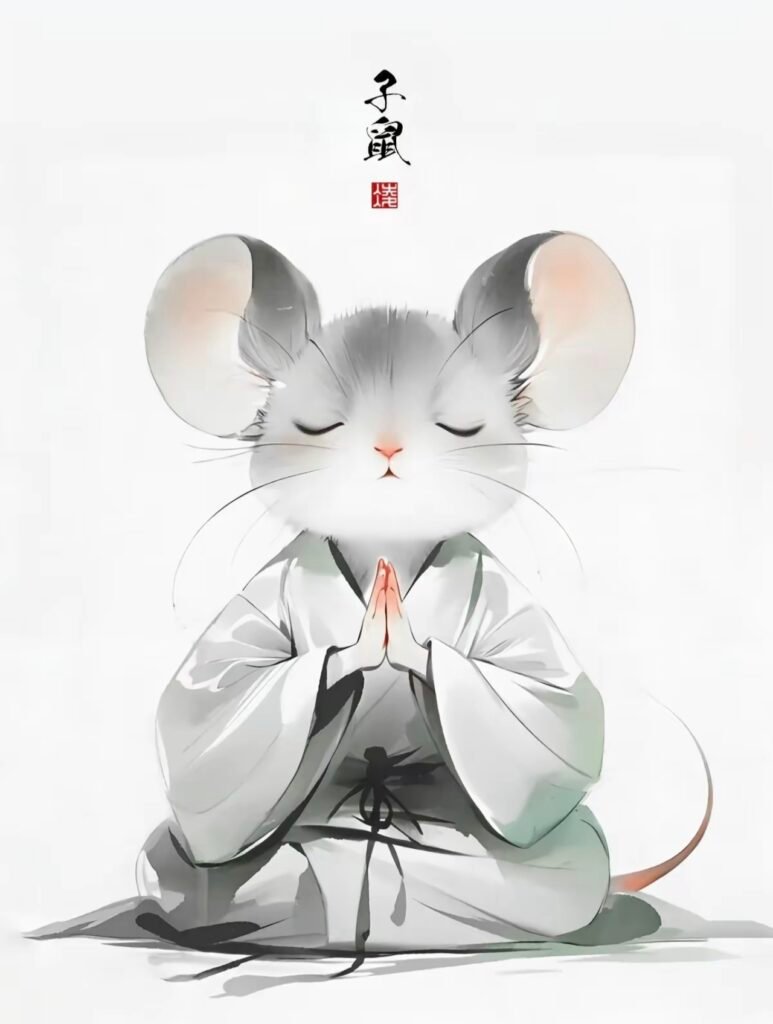
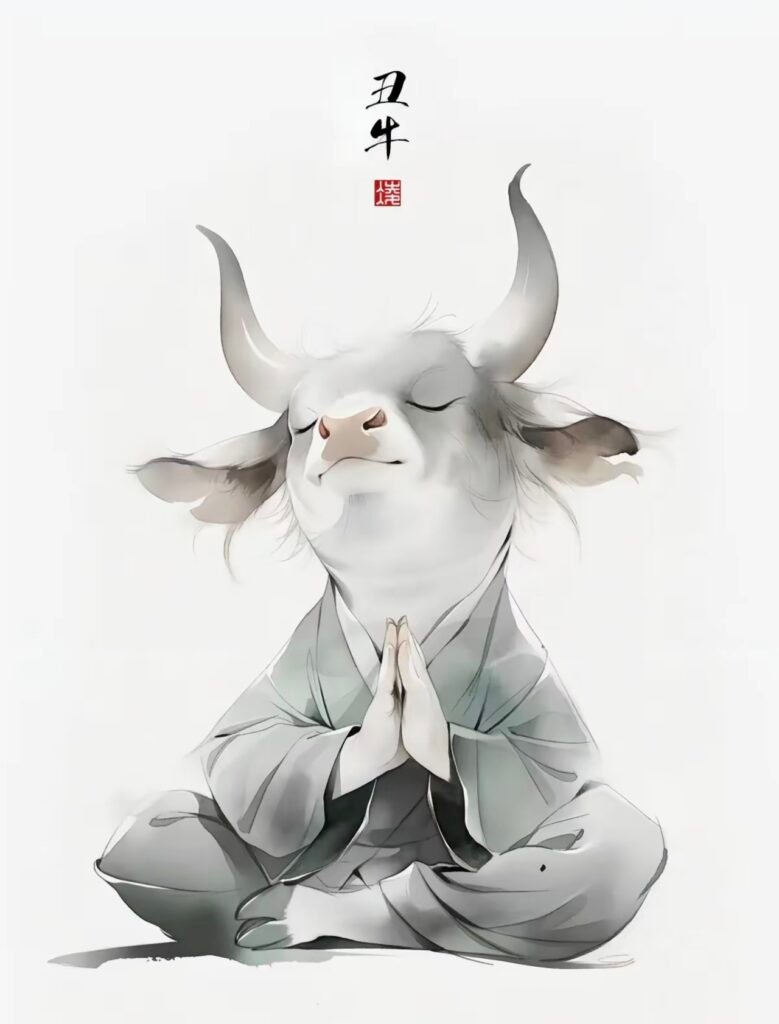
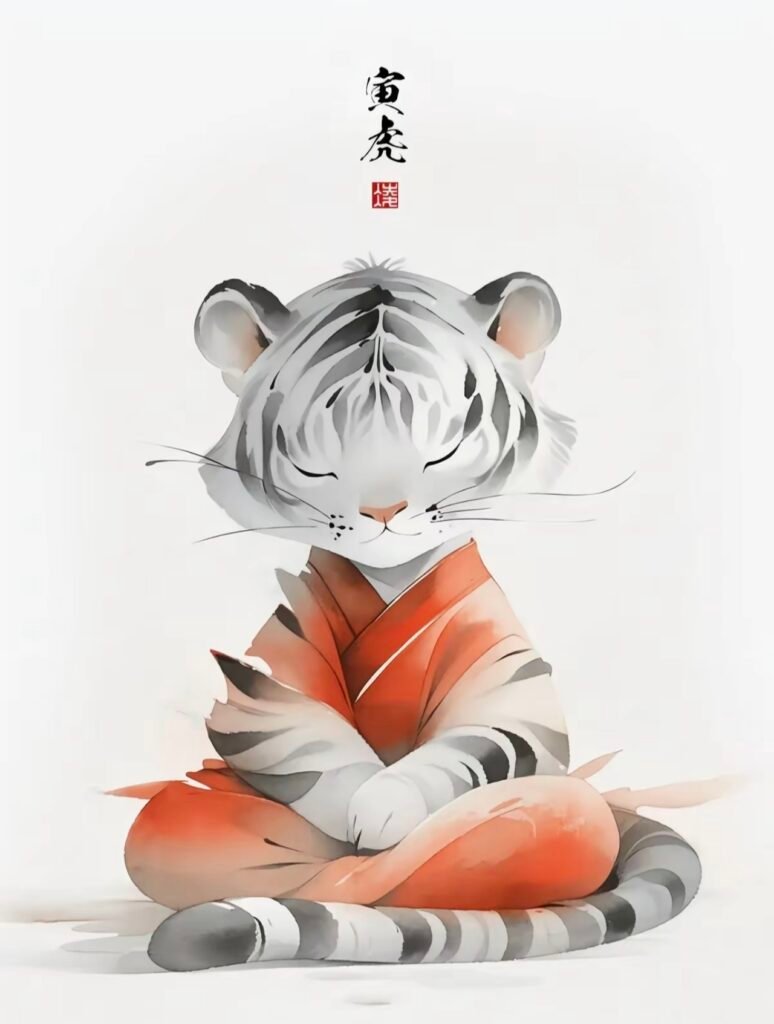
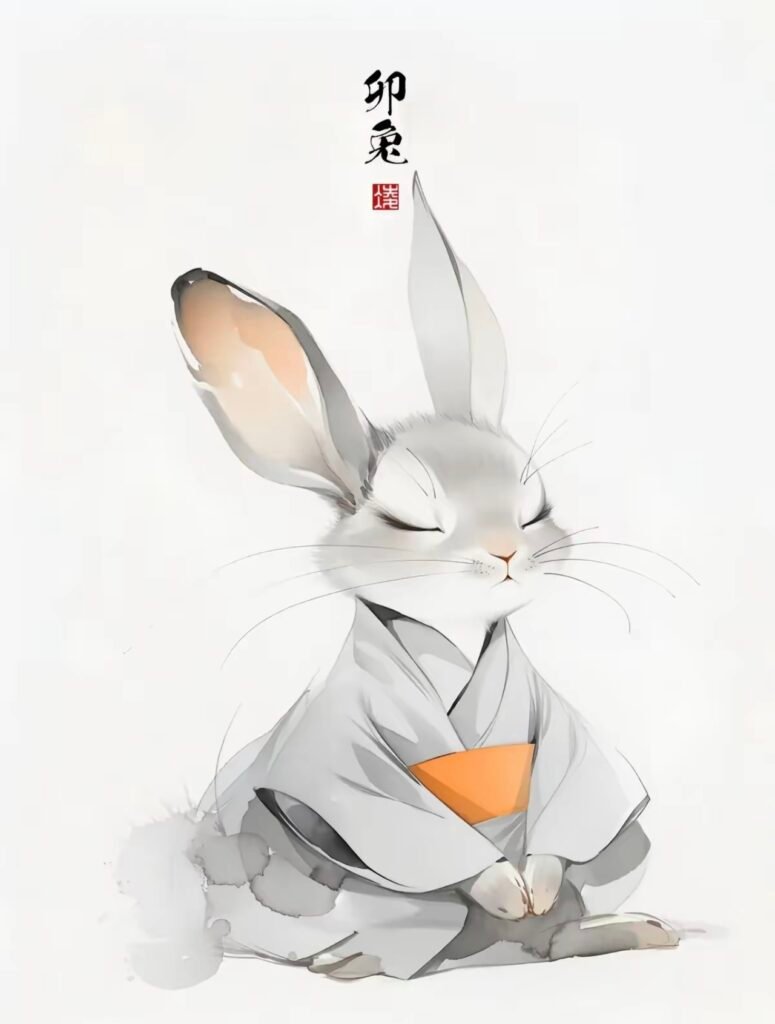
Symbolic Dimensions
The Chinese zodiac transcends timekeeping, encoding China’s philosophical wisdom through Yin-Yang duality, moral allegories, and cosmic destiny:
1. Yin-Yang & Five Elements
Rat (Zi/Water)
Yin harboring Yang: Embodies survival wisdom.
“Great rat, spare our grain” — Book of Songs reflects resourcefulness.Ox (Chǒu/Earth)
Earth’s nurturing virtue: Symbolizes diligence.
“The wise master resources; fools become enslaved by them” — Laozi.Tiger (Yín/Wood)
Thunder’s might: Channels courage and justice.
“Clouds follow dragons, winds obey tigers” — I Ching underscores unstoppable force.
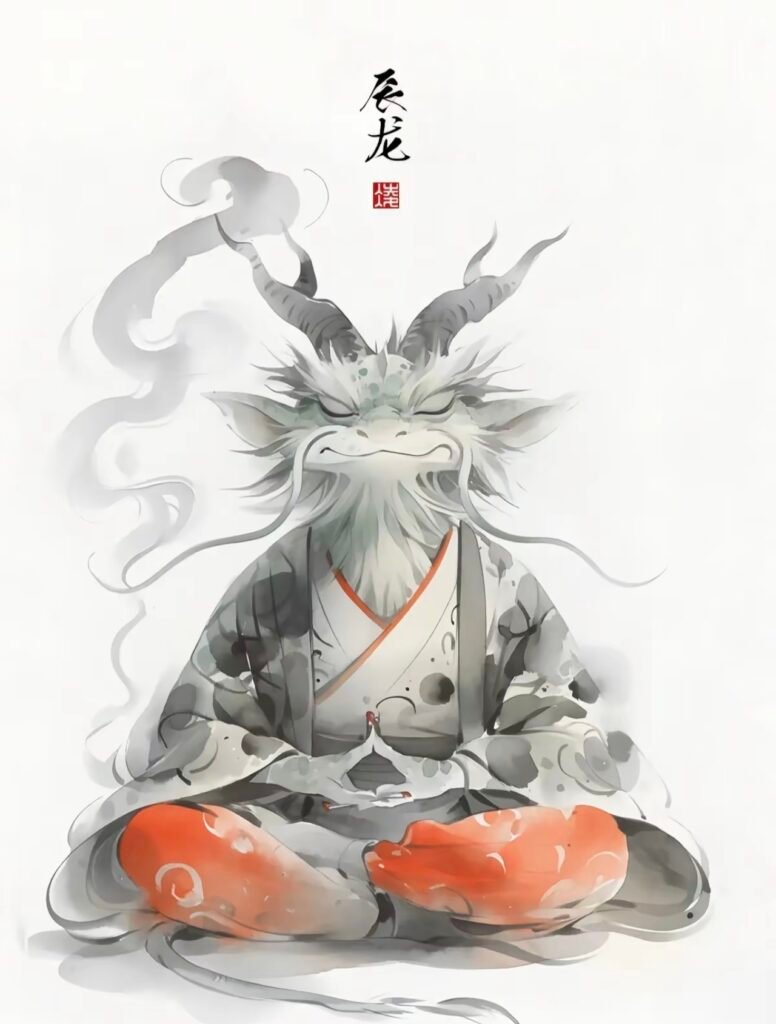
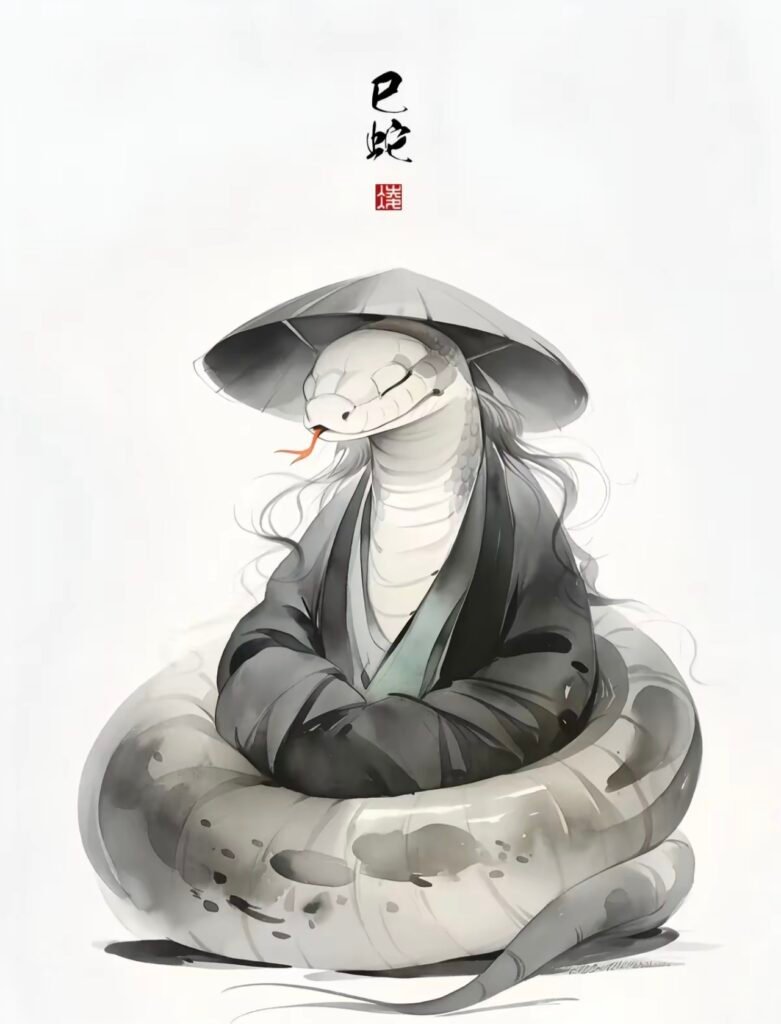
2. Moral Parables
Rabbit (Mǎo/Wood)
Moonlit purity: Represents humility.
“The jade rabbit dwells within the moon” — Qu Yuan’s Heavenly Questions.Dragon (Chén/Earth)
Imperial transformation: Embodies adaptability.
“The dragon soars to meet destiny” — I Ching teaches seizing opportunities.Snake (Sì/Fire)
Rebirth through shedding: Signifies strategic wisdom.
“The wingless serpent soars by riding winds” — Xunzi praises adaptability.Rooster (Yǒu/Metal)
Dawn’s herald: Symbolizes order and integrity.
“Five virtues: civility, valor, benevolence, wisdom, and fidelity” — Han Poetry Commentary.
“At cockcrow, we rise to duty” — Book of Songs evokes marital harmony.
3. Destiny & Divination
Horse (Wǔ/Fire)——Untamed ambition: Mirrors talent recognition.
“Bole the Horse Tamer” legends in Strategies of the Warring States.Ram (Wèi/Earth)——Triple solar harmony: Auspiciousness incarnate.
“Sheep (羊) phonetically mirrors ‘blessing’ (祥)” — Shuowen Jiezi etymology.Monkey (Shēn/Metal)——Cunning freedom: Balances wit and satire.
“A costumed monkey mocks pretension” — Zhuangzi critiques vanity.Dog (Xū/Earth)——Loyal guardianship: Blends devotion and mysticism.
“Dogs repay kindness” — Book of Rites ethics.
“Celestial dog devouring the moon” — Classic of Mountains and Seas mythic guardian against evil.Pig (Hài/Water)——Abundance unbound: Embodies prosperous ease.
“Great fortune pig” — Han dynasty bronze mirror inscriptions.
“A tuskless boar softens adversity” — I Ching teaches resilience through gentleness.
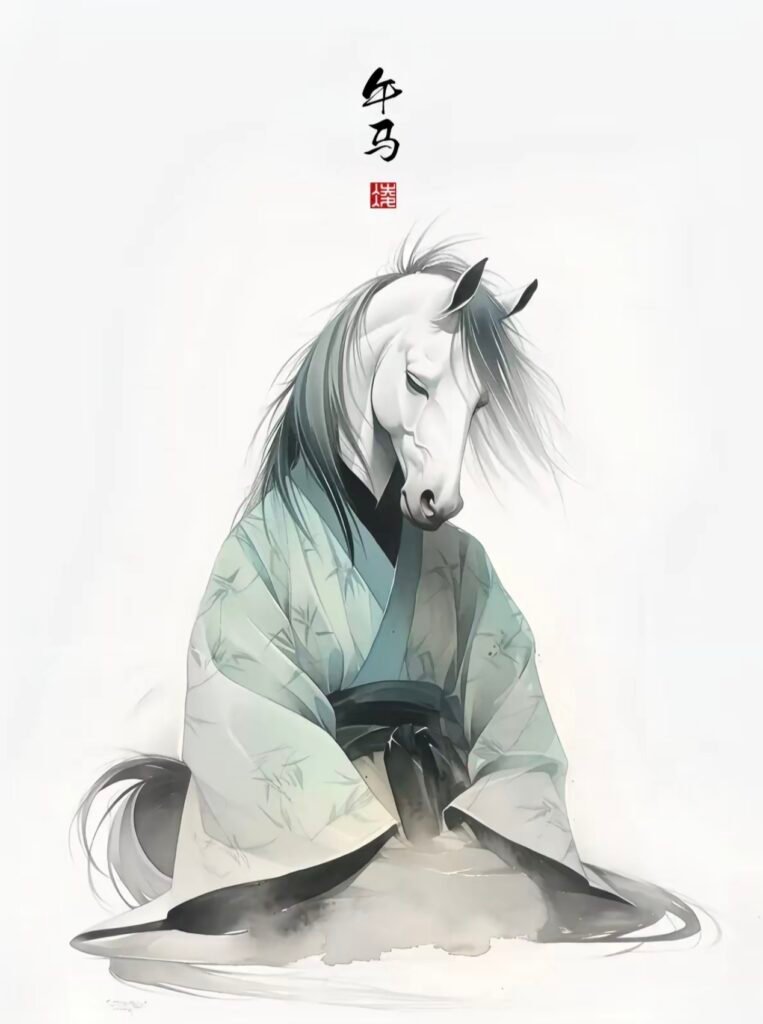
Cultural Legacy
1. Traditions
Benming Year (本命年): Wearing red to ward off misfortune during one’s zodiac year.
Marriage Harmony: Pairings like “Green Rabbit with Yellow Dog” reflect zodiac compatibility.
2. Artistic Motifs
New Year prints (“Rat’s Wedding”), jade carvings (“Dragon Offering Blessings”), and poetry (Li He’s“The rooster’s crow heralds dawn”).
3. Philosophical Synthesis
Zodiac signs correlate with I Ching trigrams (e.g., Horse as Qian/Heaven, Ox as Kun/Earth), embodying cosmic unity.
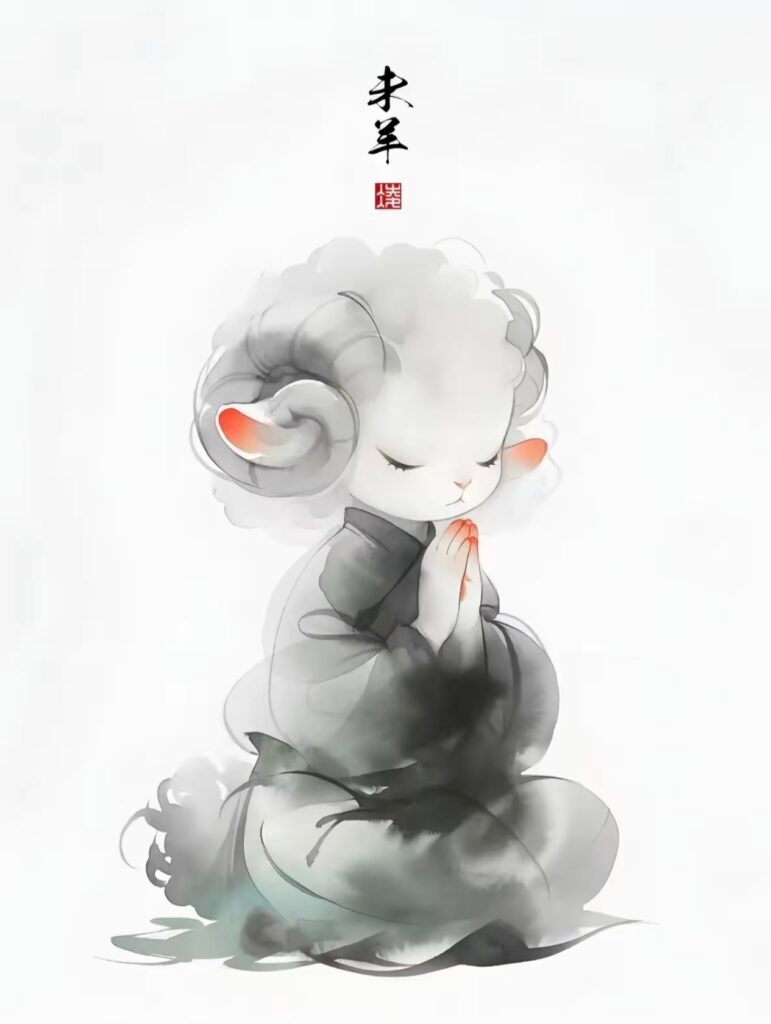
Epilogue
The Chinese zodiac is a timeless cipher etched into oracle bones of history—where star lore, animal wisdom, and human ethics converge. Its spirit whispers through Book of Songs verses and dances in Dunhuang frescoes, forever imprinted as a cultural DNA in the Chinese psyche.
“Twelve cycles hold heaven’s code, Each beast a verse in time’s eternal ode.”
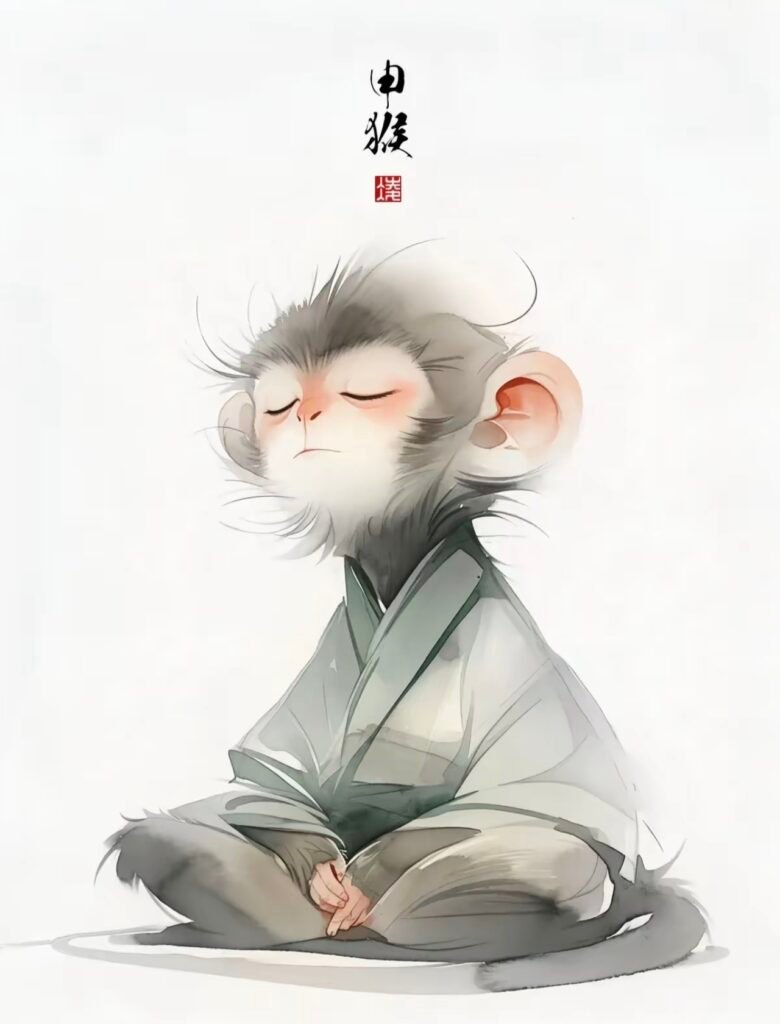
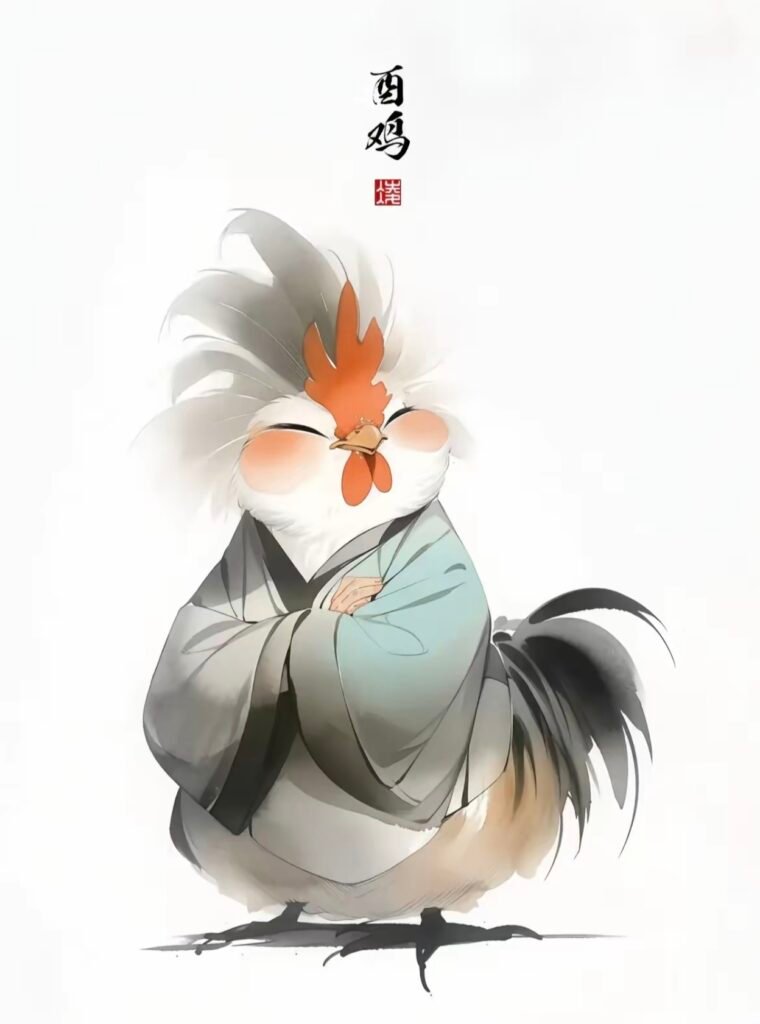
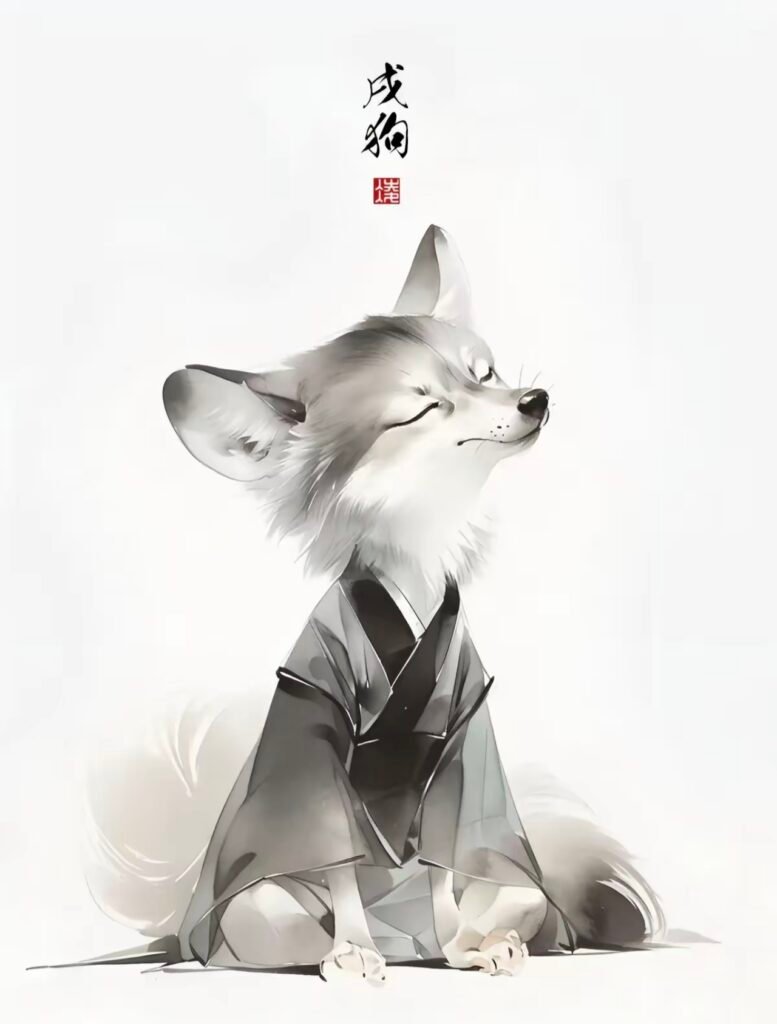
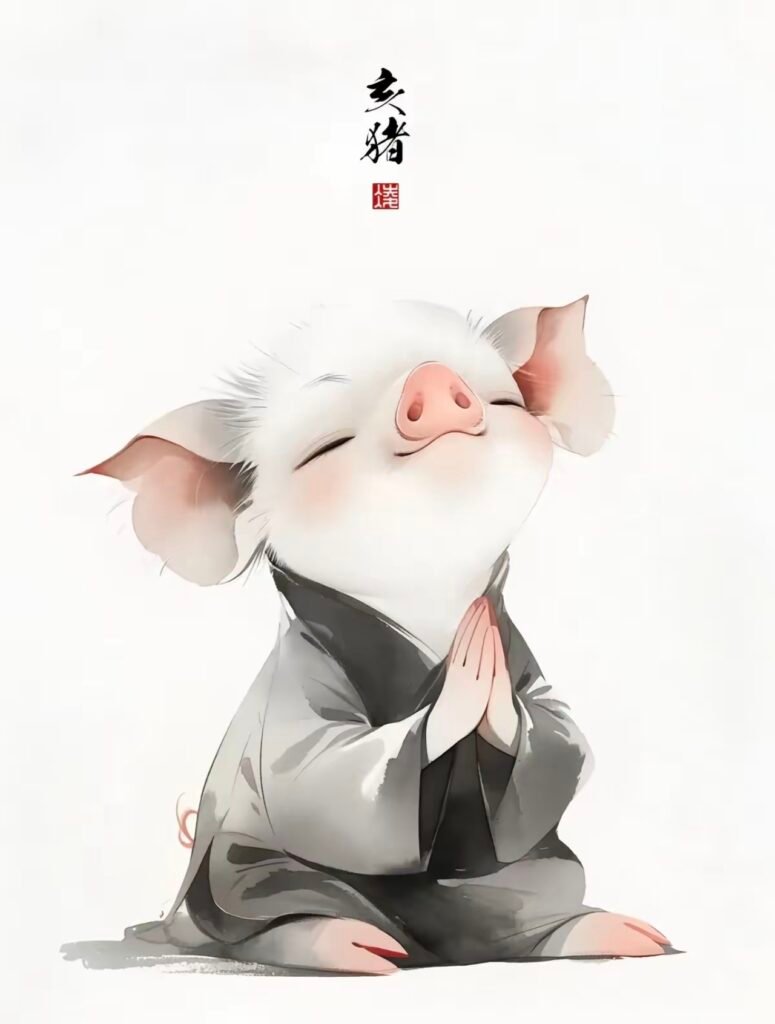
Chinese Zodiac & Earthly Branches Reference
| Zodiac Animal | Earthly Branch | Element & Polarity | Recent Years (Lunar Calendar) | Cultural Motif |
|---|---|---|---|---|
| Rat (Shǔ) | Zǐ | Water (Yang) | 1924, 1936, 1948, 1960, 1972, 1984, 1996, 2008, 2020 | “The midnight lamp weaves the rat’s destiny” — Scenes of the Imperial Capital |
| Ox (Niú) | Chǒu | Earth (Yin) | 1925, 1937, 1949, 1961, 1973, 1985, 1997, 2009, 2021 | “Plowing a thousand fields, filling a thousand barns” — Song dynasty poet Lǐ Gāng |
| Tiger (Hǔ) | Yín | Wood (Yang) | 1926, 1938, 1950, 1962, 1974, 1986, 1998, 2010, 2022 | “Where dragons coil and tigers crouch, empires rise” — Dunhuang Manuscripts |
| Rabbit (Tù) | Mǎo | Wood (Yin) | 1927, 1939, 1951, 1963, 1975, 1987, 1999, 2011, 2023 | “The jade rabbit pounds herbs in the Moon Palace” — Journey to the West |
| Dragon (Lóng) | Chén | Earth (Yang) | 1928, 1940, 1952, 1964, 1976, 1988, 2000, 2012, 2024 | “Golden scales leap through the Dragon Gate at sunrise” — Hetu-Luoshu cosmology |
| Snake (Shé) | Sì | Fire (Yin) | 1929, 1941, 1953, 1965, 1977, 1989, 2001, 2013, 2025 | “The divine serpent returns pearls to the virtuous” — Huainanziphilosophical texts |
| Horse (Mǎ) | Wǔ | Fire (Yang) | 1930, 1942, 1954, 1966, 1978, 1990, 2002, 2014, 2026 | “Red Hare gallops like the wind, leaving swallows behind” — Romance of the Three Kingdoms |
| Ram (Yáng) | Wèi | Earth (Yin) | 1931, 1943, 1955, 1967, 1979, 1991, 2003, 2015, 2027 | “Five rams bearing wheat bless the southern city” — Guangzhou’s founding legend |
| Monkey (Hóu) | Shēn | Metal (Yang) | 1932, 1944, 1956, 1968, 1980, 1992, 2004, 2016, 2028 | “The golden monkey wields a staff to cleanse the heavens” — Journey to the West |
| Rooster (Jī) | Yǒu | Metal (Yin) | 1933, 1945, 1957, 1969, 1981, 1993, 2005, 2017, 2029 | “One crow of the crimson rooster illuminates the world” — Tang poet Lǐ Hè |
| Dog (Gǒu) | Xū | Earth (Yang) | 1934, 1946, 1958, 1970, 1982, 1994, 2006, 2018, 2030 | “The celestial dog guards the moon to preserve cosmic order” — Classic of Mountains and Seas |
| Pig (Zhū) | Hài | Water (Yin) | 1935, 1947, 1959, 1971, 1983, 1995, 2007, 2019, 2031 | “The obsidian pig ushers fortune into homes” — Traditional New Year paintings |
Key Notes:
Zodiac Transition Date
The zodiac sign changes on Lunar New Year’s Day (e.g., those born after January 22, 2023, are Rabbits; earlier births are Tigers).Elemental Cycle
Each zodiac’s elemental attribute shifts with the Heavenly Stems (e.g., 2020’s “Metal Rat” vs. 2024’s “Wood Dragon”).Cultural Origins
Rooted in Qin dynasty (221-206 BCE) astrological texts like Rishu
Systematized in Eastern Han scholar Wáng Chōng’s Lùnhéng
Blends stellar worship with agricultural calendar philosophy
